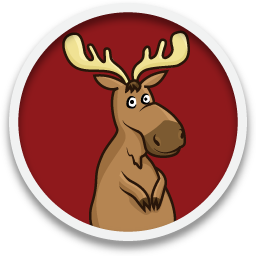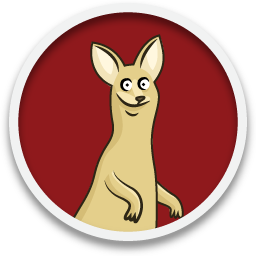Helping Your Child with Numeracy
Parents have a key role to play in helping their children develop numeracy. You don’t need to be an expert—or even to love mathematics—to make a difference. You just need a willingness to talk about and incorporate activities focusing on numbers, counting, geometry, etc. If you suffer from math anxiety, don’t worry. You will learn how to help your child without feeling stressed.

General Tips
- Encourage your children to talk about mathematics and to explain what they are thinking ... and why!
- If your child makes a mistake, don’t rush in to correct or fix it. Instead, help your child try to figure out what went wrong and what to do next.
- Remember that adults don’t have to know all the answers! If you don’t know something, offer to look it up online or in a book with your child. Learning together creates a powerful connection.
- Try not to discuss your own anxieties or failures in math with your child. If you don’t understand your children’s math homework, don’t worry. Tell them honestly you don’t know, and ask them to speak with their teacher.
- Focus on play, which is how young children learn best. Everyday life and situations offer easy, fun situations where children can explore and appreciate mathematics.
Click on the ELM Theme icons below to discover tips and activities to do with your children. But feel free to mix and match! Your children will benefit from these activities even if they haven’t yet completed a particular section.
Number Concept
- Play a counting version of I Spy. Each player takes turns saying, “I spy with my little eye, four of something” [or “the number 4” to give practice identifying numerals].
- Encourage children to count and compare: how many green beans did they eat? Who in the family ate more/less/the most green beans?
- Use laundry time to count, sort, pair, and compare. How many dirty socks need to be washed? Do the clean socks all match up? What ways can we sort laundry (dark, white, sheets and towels, red items!)? Are there more t-shirts or more pants in the laundry basket?
- On rainy days, pull out board games where children roll dice to move. Challenge them to add the numbers from the dice before actually moving.
- Create a row of 10 coins (or buttons). Ask your child to show you all the different ways the 10 items can be broken into two groups (1 + 9, 2 + 8, etc.).
- When creating shopping lists, talk about how much or many you have of an item (potatoes for example) and how many you need: “Let’s count the potatoes. We have 8 of them. But I will need 12 for the week. How many should I buy?”
- Cook with your child! The kitchen is a terrific place to learn about measuring, time, temperature, etc. And you get something tasty to eat at the end!
Patterns
- Encourage your child to hunt for patterns, which can be found both inside (wall paper, for example) and outside (stripes on an animal). Ask your child to describe what makes the pattern a pattern, e.g., is there a core part that repeats?
- Use everyday objects—from colourful blocks to kitchen spoons—to create and then talk about patterns.
- Try moving to different patterns too; for example, on your way to school walk by taking two big steps, and two small steps. Hopscotch is another great game that uses patterns (one foot, two feet, one foot, and so on…).
- While waiting at a restaurant or the doctor’s office, play Pattern Detective: use pen and paper to create a pattern, then let your child guess what the core part. For example, draw two circles and a square three times. Show it to your child. Ask if your child can identify the smallest part that repeats (adjacent 2 circles and 1 square). Then, start another repetition of the core unit by adding one circle at the end. Ask your child to complete that pattern. Now, reverse the roles, and let your child create a pattern that you must guess!
- Music offers many ways to discover and talk about patterns. When listening to songs, talk about the parts that repeat—such as a chorus that follows each different verse. Talk about the beats in a song: for example a waltz with a one, two, three pattern.
Geometry
- Go on a Geometry Scavenger Hunt to look for different shapes. To make the game more complex, create a checklist of shapes. Then have your child check off as many as he or she finds. You can even use this data to make a graph!
- Play a geometry version of I Spy: You and your child taking turns saying “I spy, with my little eye, a [name a 2D or 3D shape].” Add in a colour, for example a red cylinder, if appropriate.
- When identifying shapes, ask your child questions: “Why is this a triangle?” “How is a square different from a rectangle?” Don’t forget fun questions like “If you could be any shape, what would you be? Why?”
Data
- Children often love collecting information, so have them track data from their lives: how many times they helped empty the trash, how long they played a computer game, what time they went to bed. After a week or two, help them graph the data and talk about what they learned.
- If you have an exercise-tracking device, show it to your children and talk about the data found there. Why is that data interesting or helpful? If your device has an associated website with graphs, you can check those out too. Or make your own graphs or charts.
- For a family event, or even a dinner, suggest your child conduct a survey by asking about preferred foods, drinks, etc. Then discuss how to present that data in a graph or chart. Ask your child to talk about when a graph might be useful and when a chart would be more appropriate for showing the data.
Number Line
Head outside and have your child or children draw large-scale number lines on the sidewalk. Then practice various math skills by calling out:
- “Hop on all the even numbers” or “Hop on all the odd numbers.”
- “Jump to (some number) but counting by 2s” (or 3s, 5s, etc.).
- “Walk to 5. Now jump forward 3. Where are you?” (Continue providing number pairs to practice addition.)
- “If you start on 15, and go back 6 steps, where do you end up?” (Continue providing number pairs to practice subtraction.)
- For a bigger challenge say: “You ended up on X by moving backwards y steps. What number did you start on?”





